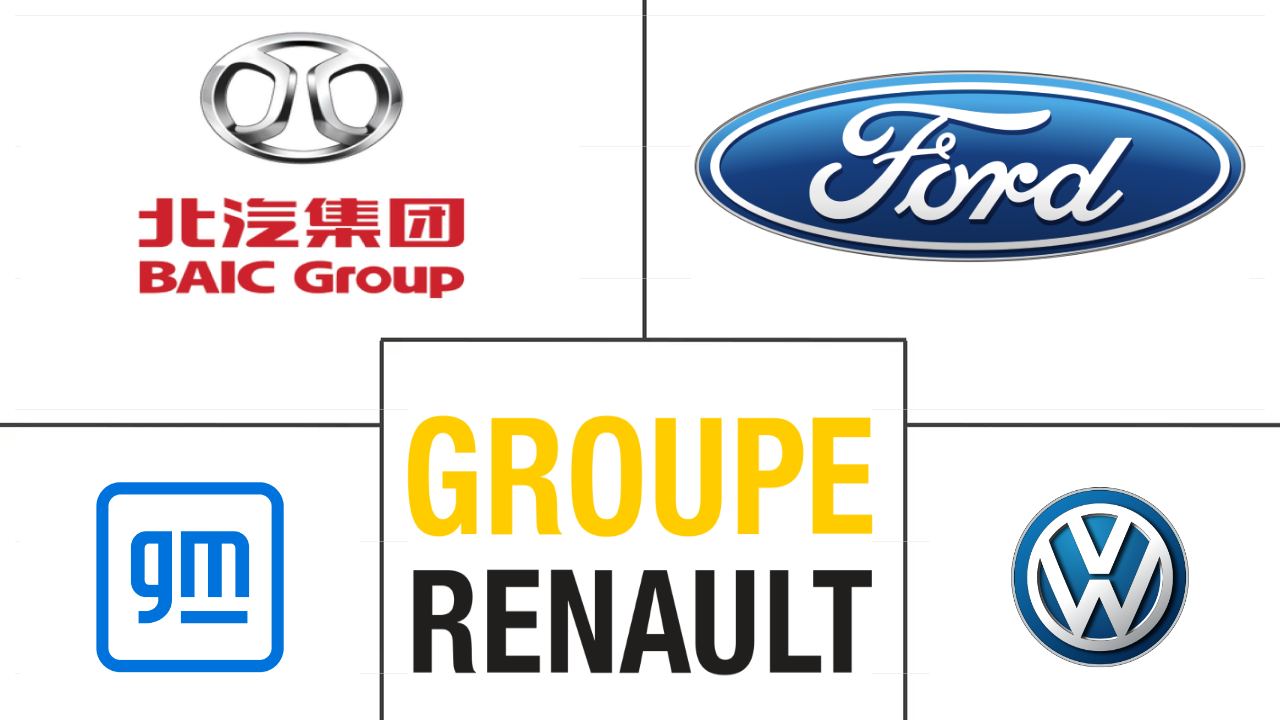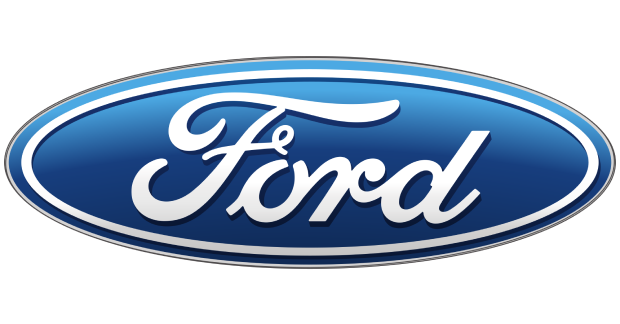Market Size of electric light commercial vehicles Industry
| Icons | Lable | Value |
|---|---|---|
|
|
Study Period | 2017 - 2030 |
|
|
Market Size (2024) | USD 56.49 Billion |
|
|
Market Size (2030) | USD 219.5 Billion |
|
|
Largest Share by Fuel Category | BEV |
|
|
CAGR (2024 - 2030) | 25.39 % |
|
|
Largest Share by Region | Asia-Pacific |
|
|
Market Concentration | Low |
Major Players |
||

|
||
|
*Disclaimer: Major Players sorted in no particular order |
Electric Light Commercial Vehicles Market Analysis
The Electric Light Commercial Vehicles Market size is estimated at 56.49 billion USD in 2024, and is expected to reach 219.5 billion USD by 2030, growing at a CAGR of 25.39% during the forecast period (2024-2030).
56.49 Billion
Market Size in 2024 (USD)
219.5 Billion
Market Size in 2030 (USD)
55.01 %
CAGR (2017-2023)
25.39 %
CAGR (2024-2030)
Largest Segment by Fuel Category
73.35 %
value share, BEV, 2023
BEVs dominate due to technological advancements, government incentives, and increasing infrastructure supporting electric vehicles.
Largest Segment by Vehicle Configuration
51.03 %
value share, Trucks, 2023
Trucks dominate due to their critical role in logistics and transportation, meeting high demand for goods movement and commercial activities across various industries.
Largest Segment by Region
38.37 %
value share, Asia-Pacific, 2023

Asia-Pacific leads due to large-scale manufacturing, growing economies, and high demand for electric light commercial vehicles in urban and rural areas, supported by strong government policies.
Largest Segment by Fuel Category
73.35 %
value share, BEV, 2023
BEVs dominate due to technological advancements, extensive government support, and growing consumer preference for zero-emission vehicles.
Leading Market Player
10.20 %
market share, Ford Motor Company, 2023

Ford dominates global electric LCV market with 64% market share. Boosted EV sales and drive systems to fuel future growth.
Europe and North America are poised to capture significant shares in electric LCV (light commercial vehicle) truck sales
- The e-commerce sector has witnessed a significant surge in growth, particularly in the aftermath of the COVID-19 pandemic. As the backbone of this industry, logistics businesses have taken on the responsibility of providing crucial delivery services. To bolster their operations, these businesses are increasingly turning to leasing strategies to expand their vehicle fleets. In this pursuit of growth, the sector is actively seeking partners who can offer comprehensive mobility solutions.
- Amid mounting environmental concerns, governments and environmental agencies are rolling out stringent emission norms and regulations. These measures are anticipated to drive up the manufacturing costs of both electric drivetrains and fuel-efficient diesel engines in the coming years. In China, a pivotal player in the automotive market, vehicles sold and registered after July 1, 2020, must adhere to the China 6 Emission Standards. While the current standards, 6A, focus on reducing emissions from gasoline engines, the revised 6B limits, slated for implementation from July 1, 2023, aim to curtail hydrocarbon emissions by 50% and NOx emissions by 40% compared to the Euro 6 standards. Notably, medium- and heavy-duty vehicles in China are currently adhering to the China V emission standards. The latest iteration, China VI emissions, was introduced in July 2018, with the implementation of phase "a" commencing from July 2021 and phase "b" from 2022.
- Europe and North America are poised to capture significant shares in the sales of electric LCV (light commercial vehicle) trucks. This trend is further bolstered by mounting concerns over environmental pollution stemming from traditional internal combustion engine vehicles, underscoring the potential for growth in the electric LCV market.
The rising demand for clean energy in the automotive industry and policies to promote the adoption of EVs are the key drivers for electric commercial vehicles globally
- Several governments worldwide have proactively implemented policies to promote the adoption of electric vehicles in recent years. Notably, China, India, France, and the United Kingdom have set targets to phase out the petrol and diesel vehicle industries by 2040.
- The rising demand for clean energy in the automotive sector is a key driver for the market's growth. Major OEMs are reshaping their strategies for electric vehicles. For example, in March 2022, Kia Motors unveiled plans to enter the electric pickup truck segment, with two models slated for release by 2027. One of these models will directly compete with established rivals like the Tesla Cybertruck, Ford F-150 Lightning, Rivian R1T, and GMC Hummer EV. Similarly, in March 2022, Ford announced its intention to introduce a new lineup of four commercial electric vehicles by 2024. This lineup included the all-new Transit Custom one-tonne van and Tourneo Custom multi-purpose vehicle launched in 2023, followed by the next-generation Transit Courier van and Tourneo Courier multi-purpose vehicle in 2024.
- North America, with its high internet and smartphone penetration, presents lucrative opportunities for e-commerce companies to tap into the retail e-commerce market. This digital landscape not only facilitates broader business expansion for e-commerce players but also plays a pivotal role in driving the global electric light commercial vehicles market as well as its truck segment. Consequently, automakers are ramping up their R&D investments in the truck segment, further fueling the growth of electric trucks.
Electric Light Commercial Vehicles Industry Segmentation
Light Commercial Vehicles are covered as segments by Vehicle Configuration. BEV, FCEV, HEV, PHEV are covered as segments by Fuel Category. Africa, Asia-Pacific, Europe, Middle East, North America, South America are covered as segments by Region.
- The e-commerce sector has witnessed a significant surge in growth, particularly in the aftermath of the COVID-19 pandemic. As the backbone of this industry, logistics businesses have taken on the responsibility of providing crucial delivery services. To bolster their operations, these businesses are increasingly turning to leasing strategies to expand their vehicle fleets. In this pursuit of growth, the sector is actively seeking partners who can offer comprehensive mobility solutions.
- Amid mounting environmental concerns, governments and environmental agencies are rolling out stringent emission norms and regulations. These measures are anticipated to drive up the manufacturing costs of both electric drivetrains and fuel-efficient diesel engines in the coming years. In China, a pivotal player in the automotive market, vehicles sold and registered after July 1, 2020, must adhere to the China 6 Emission Standards. While the current standards, 6A, focus on reducing emissions from gasoline engines, the revised 6B limits, slated for implementation from July 1, 2023, aim to curtail hydrocarbon emissions by 50% and NOx emissions by 40% compared to the Euro 6 standards. Notably, medium- and heavy-duty vehicles in China are currently adhering to the China V emission standards. The latest iteration, China VI emissions, was introduced in July 2018, with the implementation of phase "a" commencing from July 2021 and phase "b" from 2022.
- Europe and North America are poised to capture significant shares in the sales of electric LCV (light commercial vehicle) trucks. This trend is further bolstered by mounting concerns over environmental pollution stemming from traditional internal combustion engine vehicles, underscoring the potential for growth in the electric LCV market.
| Vehicle Configuration | |
| Light Commercial Vehicles |
| Fuel Category | |
| BEV | |
| FCEV | |
| HEV | |
| PHEV |
| Region | ||||||||||||||||||||
| ||||||||||||||||||||
| ||||||||||||||||||||
| ||||||||||||||||||||
| ||||||||||||||||||||
| ||||||||||||||||||||
|
Electric Light Commercial Vehicles Market Size Summary
The Electric Light Commercial Vehicles Market is experiencing significant growth, driven by the increasing demand for sustainable transportation solutions and the rise of e-commerce. The logistics sector, crucial for delivering goods, is expanding its vehicle fleets through leasing strategies to meet the growing needs of online retail. This expansion is further supported by partnerships seeking comprehensive mobility solutions. Environmental concerns have led to stringent emission regulations, particularly in regions like China, Europe, and North America, which are expected to influence the manufacturing costs of electric drivetrains and fuel-efficient diesel engines. These regulations, alongside government policies promoting electric vehicle adoption, are propelling the market forward, with major automotive manufacturers like Kia and Ford reshaping their strategies to include electric models, such as electric pickup trucks and commercial vehicles.
The market's growth is also fueled by the increasing penetration of e-commerce in North America, which offers lucrative opportunities for electric light commercial vehicles. The digital landscape facilitates business expansion and drives the demand for electric trucks, prompting automakers to invest heavily in research and development. The shift towards electric vehicles is further supported by global sales trends and ambitious targets set by leading manufacturers and organizations aiming for zero-emission fleets. Asia-Pacific and Europe are expected to lead in production, benefiting from advancements in battery technology and vehicle electrification. The market remains fragmented, with key players like BAIC Motor Corporation, Ford, General Motors, Groupe Renault, and Volkswagen AG playing significant roles in shaping its future.
Electric Light Commercial Vehicles Market Size - Table of Contents
-
1. MARKET SEGMENTATION (includes market size in Value in USD and Volume, Forecasts up to 2030 and analysis of growth prospects)
-
1.1 Vehicle Configuration
-
1.1.1 Light Commercial Vehicles
-
-
1.2 Fuel Category
-
1.2.1 BEV
-
1.2.2 FCEV
-
1.2.3 HEV
-
1.2.4 PHEV
-
-
1.3 Region
-
1.3.1 Africa
-
1.3.1.1 South Africa
-
1.3.1.2 Rest-of-Africa
-
-
1.3.2 Asia-Pacific
-
1.3.2.1 Australia
-
1.3.2.2 China
-
1.3.2.3 India
-
1.3.2.4 Indonesia
-
1.3.2.5 Japan
-
1.3.2.6 Malaysia
-
1.3.2.7 South Korea
-
1.3.2.8 Thailand
-
1.3.2.9 Rest-of-APAC
-
-
1.3.3 Europe
-
1.3.3.1 Austria
-
1.3.3.2 Belgium
-
1.3.3.3 Czech Republic
-
1.3.3.4 Denmark
-
1.3.3.5 Estonia
-
1.3.3.6 France
-
1.3.3.7 Germany
-
1.3.3.8 Ireland
-
1.3.3.9 Italy
-
1.3.3.10 Latvia
-
1.3.3.11 Lithuania
-
1.3.3.12 Norway
-
1.3.3.13 Poland
-
1.3.3.14 Russia
-
1.3.3.15 Spain
-
1.3.3.16 Sweden
-
1.3.3.17 UK
-
1.3.3.18 Rest-of-Europe
-
-
1.3.4 Middle East
-
1.3.4.1 Saudi Arabia
-
1.3.4.2 Rest-of-Middle East
-
-
1.3.5 North America
-
1.3.5.1 Canada
-
1.3.5.2 Mexico
-
1.3.5.3 US
-
1.3.5.4 Rest-of-North America
-
-
1.3.6 South America
-
1.3.6.1 Argentina
-
1.3.6.2 Brazil
-
1.3.6.3 Rest-of-South America
-
-
-
Electric Light Commercial Vehicles Market Size FAQs
How big is the Global Electric Light Commercial Vehicles Market?
The Global Electric Light Commercial Vehicles Market size is expected to reach USD 56.49 billion in 2024 and grow at a CAGR of 25.39% to reach USD 219.53 billion by 2030.
What is the current Global Electric Light Commercial Vehicles Market size?
In 2024, the Global Electric Light Commercial Vehicles Market size is expected to reach USD 56.49 billion.

